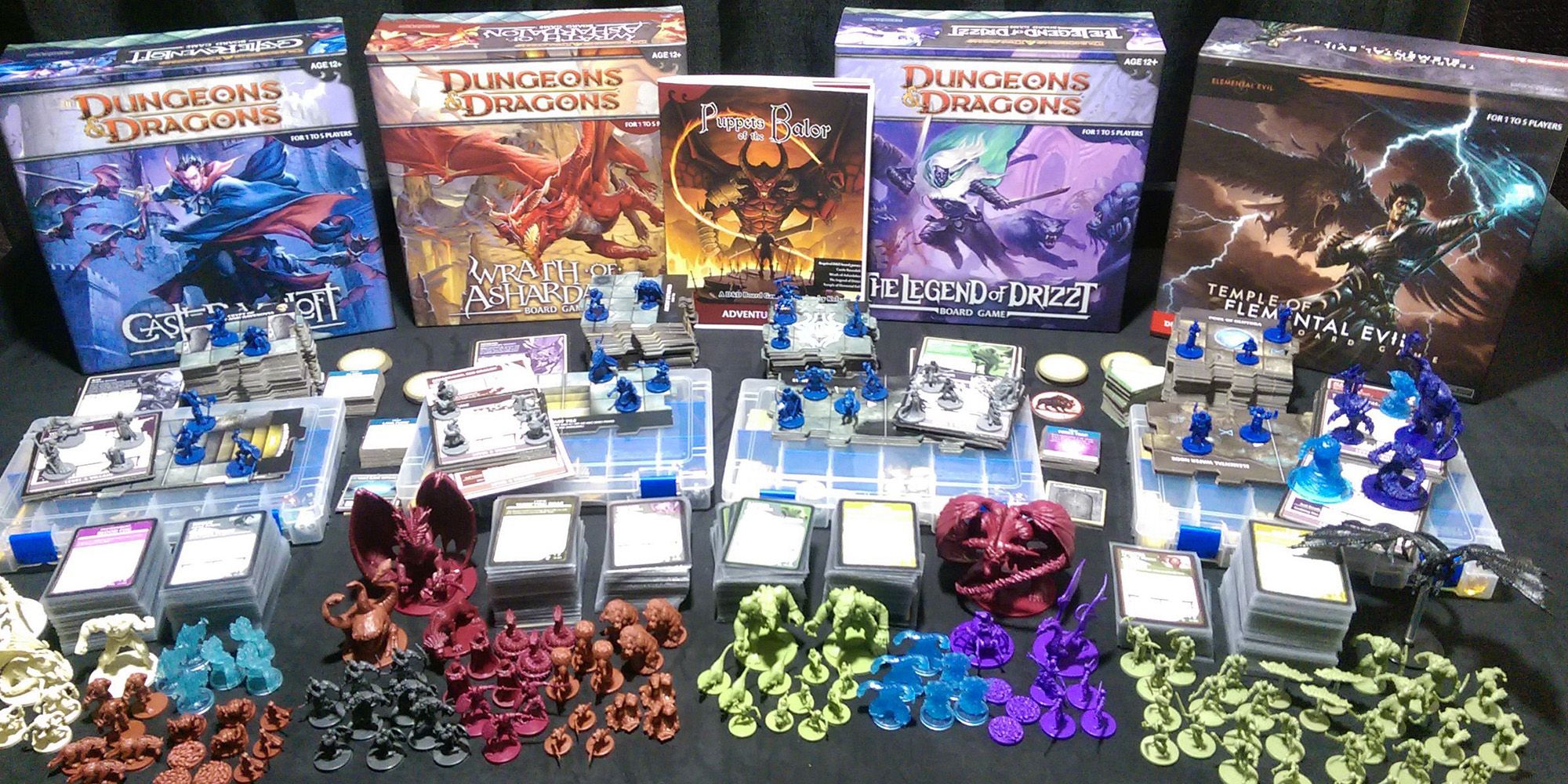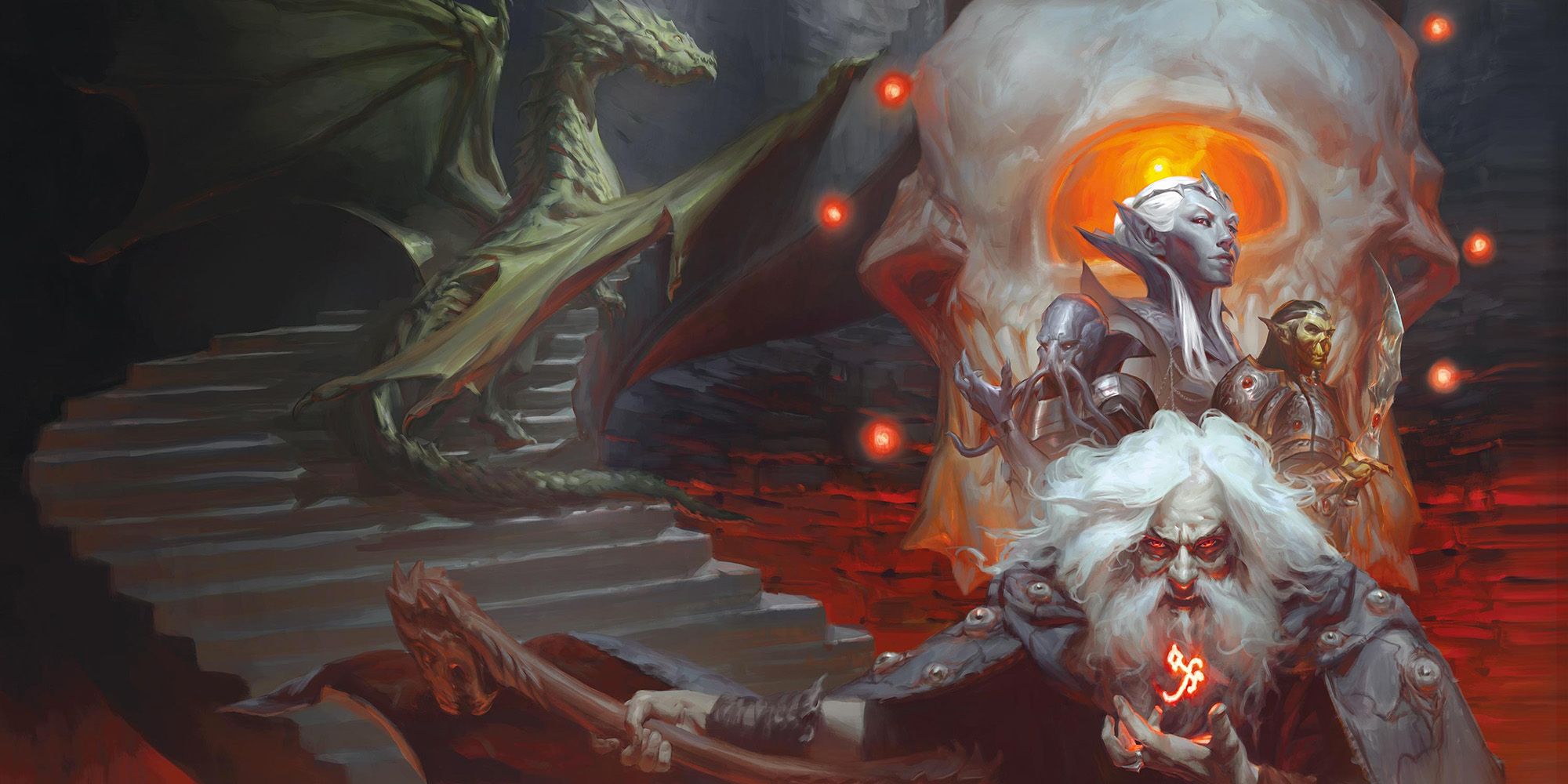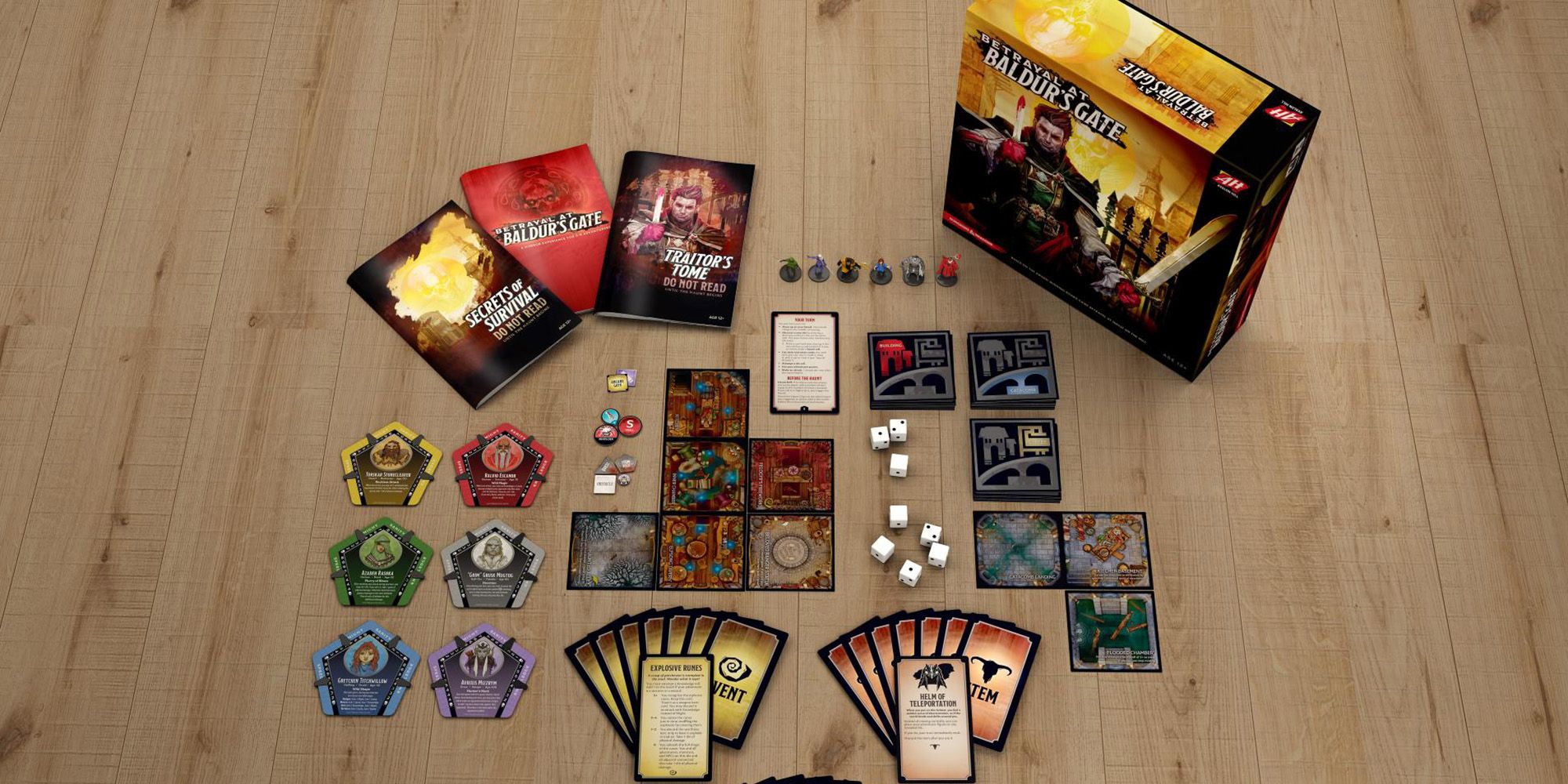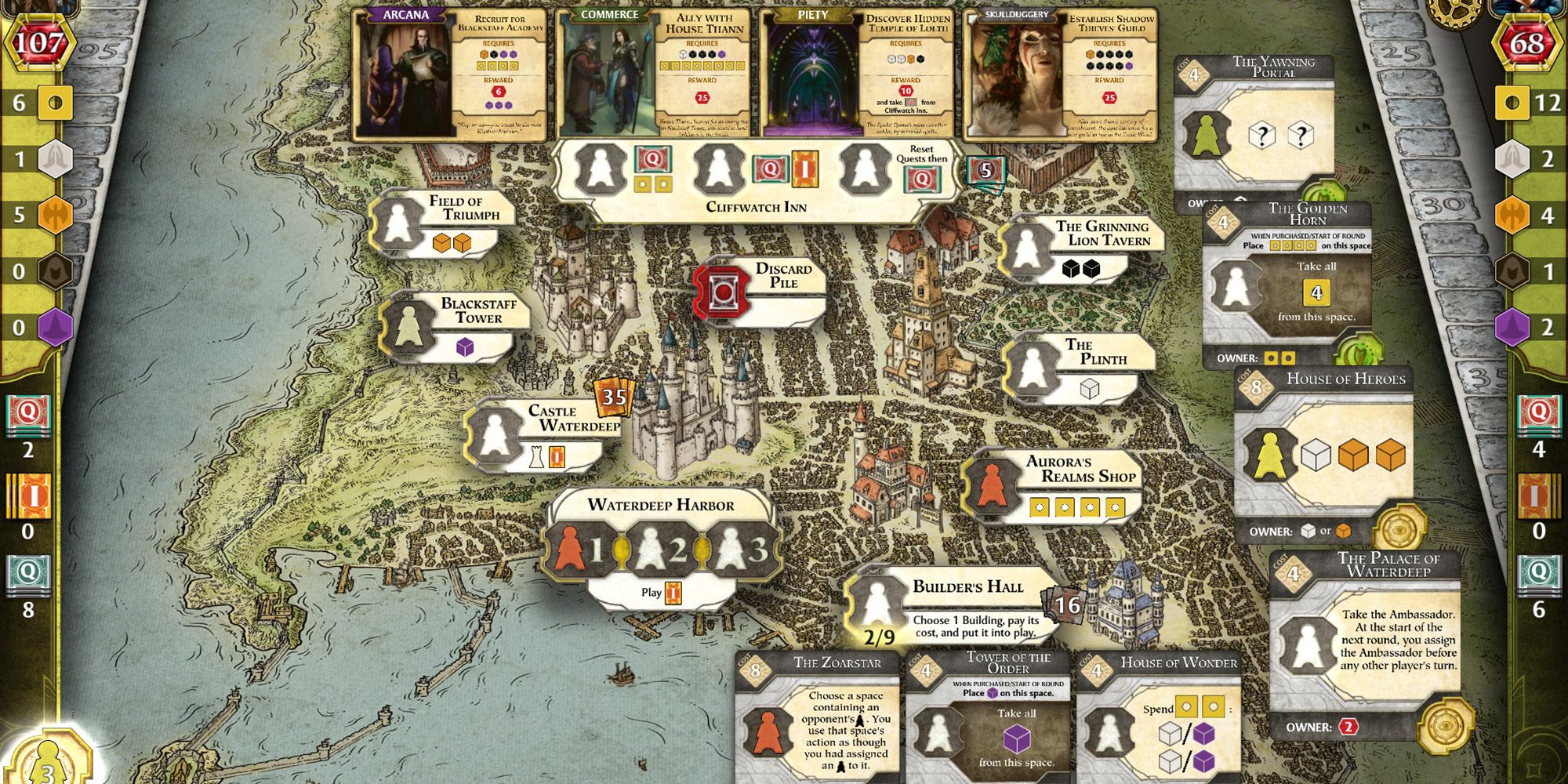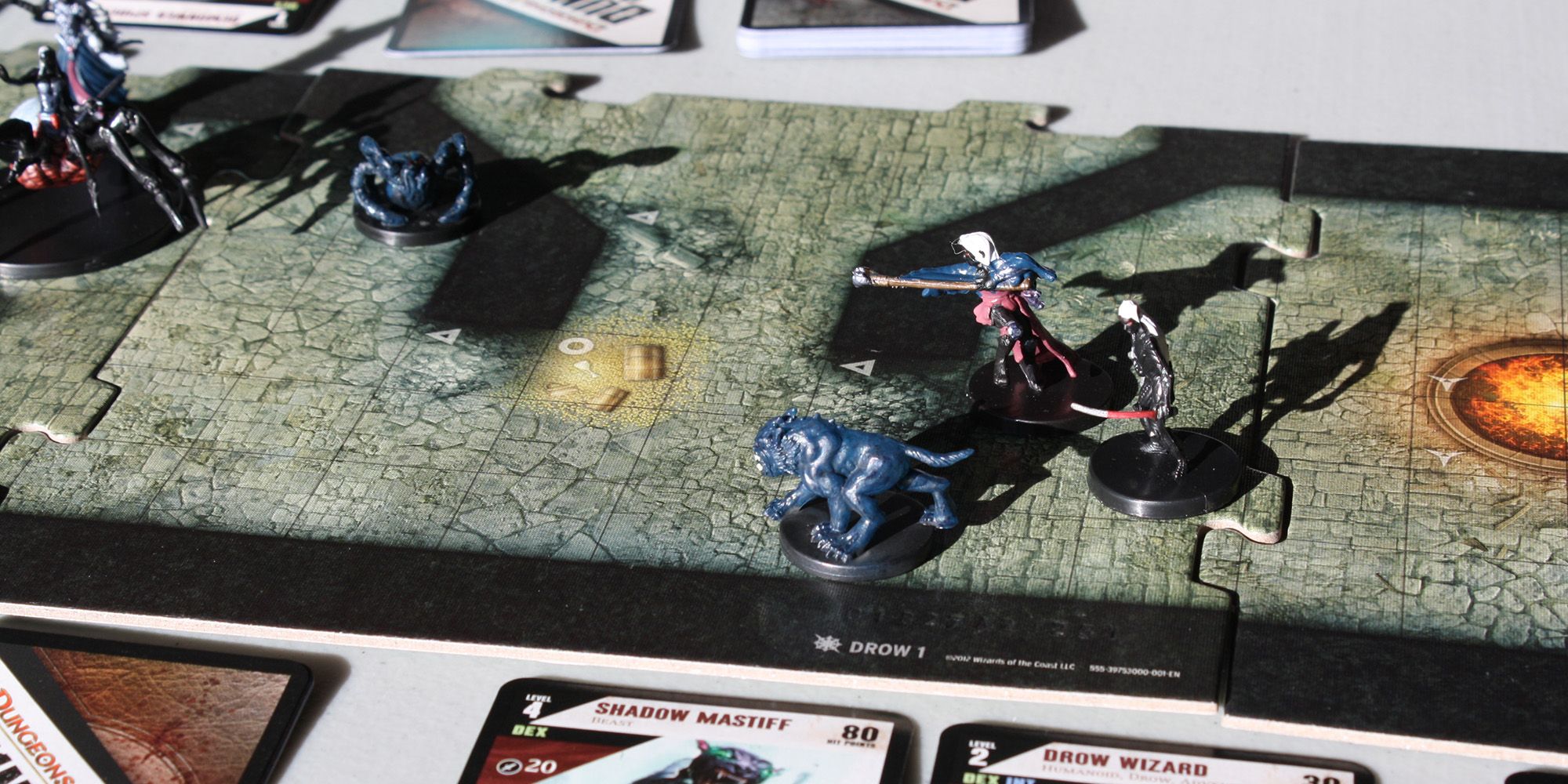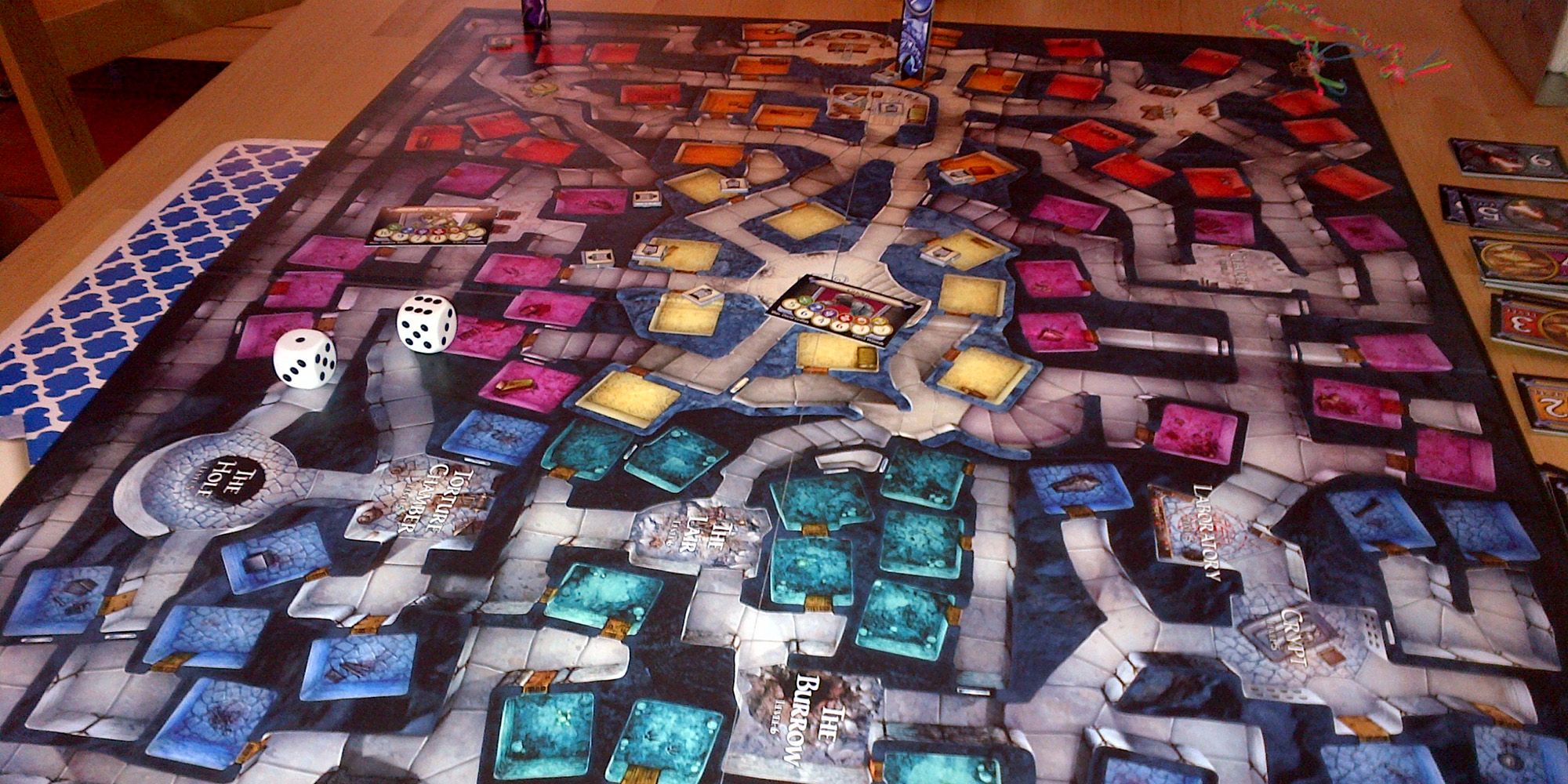Dungeons & Dragons is a huge franchise that has branched out of traditional campaigns and into other mediums. With that in mind, it's fitting that the popular tabletop RPG would get its own board games. Many are based on lore from new and old adventure modules and use simplified versions of different edition's combat systems.
In true fashion, many of these board games allow for player rules, creative campaigning and can combine with one another to create some interesting dungeon crawling experiences. There is something for everyone with different rulesets and game difficulties, so you don't need to be a seasoned adventurer to jump into a game.
Waterdeep – Dungeon of the Mad Mage
This is the newest addition to the D&D Adventure System line up. The last few games have revised the systems to make them less difficult and fans have responded well to it. In Dungeon of the Mad Mage, players set out to explore the second edition classic Undermountain, a subterranean "megadungeon." Located in the city Waterdeep, the dungeon is found in a tavern, and inside dwells a mad mage as the title suggests.
As with all the Adventure System board games, DotMM provides several scenarios for groups and a few for solo play. While there are a set of core rules, some can be altered to make gameplay easier or harder. If you want to take it a step further, there are fan-made campaigns and rules online to keep the game fresh. You could even incorporate your own campaigns.
The game comes with a ton of stuff like dungeon tiles, miniatures and cards. Characters are premade and can level up, which saves setup time, though you also have the freedom to create your own. The dungeon tiles are made to connect with pieces from the other Adventure System games, and components are compatible with each other. The game isn't just a dungeon crawler. It can be played like a campaign and features cooperative play.
Betrayal at Baldur's Gate
This board game is a cooperative adventure. That is until one of your allies becomes a traitor. It's based on an older game that plays similarly, Betrayal at House on the Hill, but incorporates D&D's Baldur's Gate. As a traitor, there is a bit of a ruse that needs to be kept up, but players don't always know they are the traitor right away making it interesting as the game goes on.
Since this is a D&D game, there is also a bit adventuring and questing going on in the form of wandering around the city and uncovering information and items. It follows Betrayal at House on the Hill's gameplay, but with that D&D feel with the characters and setting. The beginning of the game is about exploring and gathering items while suspense builds. In the second part, the Haunting happens, and players must work together to uncover what's happening and defeat the evil while someone among them is working against them. It's an interesting game with a lot of ties.
Lords of Waterdeep
Taking place in the same realm as the previous game, Lords of Waterdeep's events take place on the surface rather than below. Players take on the roles of shady behind-the-scenes rulers of the city who are vying for power. Instead of questing through dungeons and fighting, you take on the role of the quest giver to gain influence and wealth while constructing buildings and out-maneuvering opponents to take over Waterdeep. It's a different side of traditional D&D campaigns that requires some strategy to best other players. The game has regular components and relies on the use of cards for randomization. The artwork is amazing like that of other D&D products, but it has a classic style to it.
If you can't get enough, there is an expansion called Scoundrels of Skullport that adds more content and new gameplay. One of the modules included is the Undermountain. It adds dangerous quests for players to send their agents on for an opportunity at greater rewards. The second included is Skullport, which adds a new resource fitting for a political game: corruption. The expansion also adds new cards to the mix and buildings to construct while taking over the areas. Lords of Waterdeep focuses more on resource management rather than D&D's traditional questing format.
Dungeon Command
This is a D&D skirmish game with a few modules that can be combined or played with one set. With one set, each player chooses a commander. Forces are dependent on what cards the player has, so they don't need to be divided or fought over. With more than one set, players choose a commander from their set and can access all their monsters as long as they have the card in their hand. The more sets and players, the more epic the battles.
Each commander has their own unique ability, which helps their troops or gives players certain advantages, and has a certain amount of morale, or health. This determines how many creatures or soldiers can be on the field, and reaching zero means losing. This means players have to be strategic about who they put out rather than summoning whatever the strongest creature is the second the card appears in a hand.
There are five different sets, each with their own theme from D&D, miniatures and playstyle: Heart of Cormyr, Tyranny of Goblins, Sting of Lolth, Curse of Undeath and Blood of Gruumsh. These come with additional monster cards, meaning they add a bit of customization to each game. If you are creating a campaign, you can also incorporate the board pieces.
Dungeon!
Moving away from complex board game enthusiast styles, Dungeon! is a family-friendly dungeon crawler with simplified mechanics. It was made with young children in mind, and it's extremely basic with most encounters and combat being left to the chance of the roll. The goal is to traverse the dungeon and make it out with a certain amount of treasure.
The game features basic characters to choose from like a Rogue, Warrior and Wizard, each with their own abilities and treasure goal. The Wizard has slightly more complicated mechanics because he uses spells, but otherwise, most encounters, attacks and loot are dependent on what's rolled. There are different levels to the dungeon, each increasing in difficulty as players move through them. The game has been reprinted a few times in its life and is great for introducing kids board games or the world of D&D from an early age, though seasoned players probably won't find it particularly entertaining.

